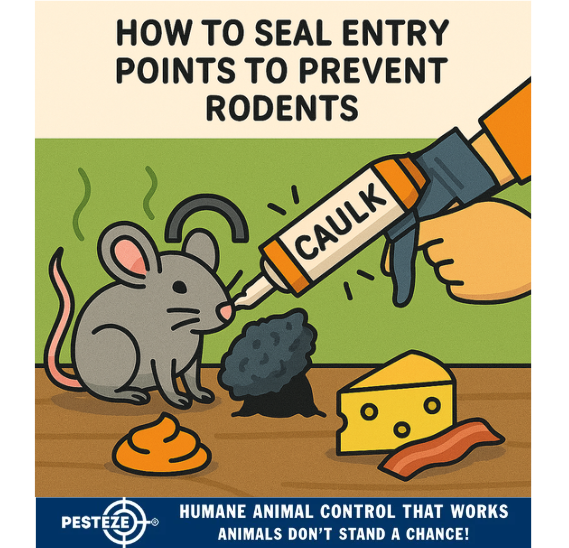HOW TO SEAL ENTRY POINTS TO PREVENT RODENTS

HOW TO SEAL ENTRY POINTS TO PREVENT RODENTS
SUMMARY
Rodents can squeeze through openings as small as a dime, making homes vulnerable to infestations. Sealing entry points is one of the most effective ways to prevent mice and rats from invading your space. This guide outlines practical, pet-safe, and long-lasting techniques to block rodent access and protect your home. Whether you're dealing with an active infestation or taking preventive measures, these strategies will help you create a rodent-proof environment.
FEATURES
-
Identifying Vulnerable Areas: Learn where rodents commonly enter, from foundations to rooflines.
-
Choosing the Right Materials: Discover which sealants and barriers rodents can’t chew through.
-
Weatherproofing Benefits: Improve insulation and energy efficiency while keeping pests out.
-
Pet-Safe Solutions: Use non-toxic products that won’t harm your furry companions.
-
DIY vs. Professional Help: Know when to tackle sealing yourself and when to call experts.
-
Maintenance Tips: Keep entry points secure with seasonal inspections and repairs.
GUIDE DESCRIPTION
Rodents are persistent invaders, capable of entering homes through the tiniest cracks and gaps. Sealing entry points is a proactive and humane way to prevent infestations before they start. This guide walks you through the process of identifying, sealing, and maintaining vulnerable areas in and around your home.
Begin by inspecting your property thoroughly. Common rodent entry points include gaps around windows and doors, cracks in the foundation, vents, utility lines, and roof eaves. Use a flashlight to check dark corners, crawl spaces, and attic access points. Look for signs like droppings, gnaw marks, or greasy rub trails.
Once identified, seal these openings using rodent-resistant materials. Steel wool combined with caulk is ideal for small gaps, while hardware cloth or metal flashing works well for larger holes. Avoid using foam sealants alone, as rodents can chew through them. For vents and chimneys, install mesh screens that allow airflow but block pests.
Weatherproofing your home not only deters rodents but also improves energy efficiency. Sealing gaps reduces drafts and moisture intrusion, creating a healthier indoor environment. Choose pet-safe sealants and avoid chemical repellents that could harm animals.
Decide whether to DIY or hire a professional. While many sealing tasks are manageable, complex repairs or roofline work may require expert help. Pest control specialists can also identify hidden entry points and apply long-lasting solutions.
Regular maintenance is key. Inspect your home seasonally, especially before winter, when rodents seek warmth. Reapply sealants as needed and monitor for new damage.
By sealing entry points effectively, you’ll protect your home from rodents, reduce health risks, and enhance overall comfort. Prevention is the first—and best—line of defense.
- Amy Chang


Comments 0